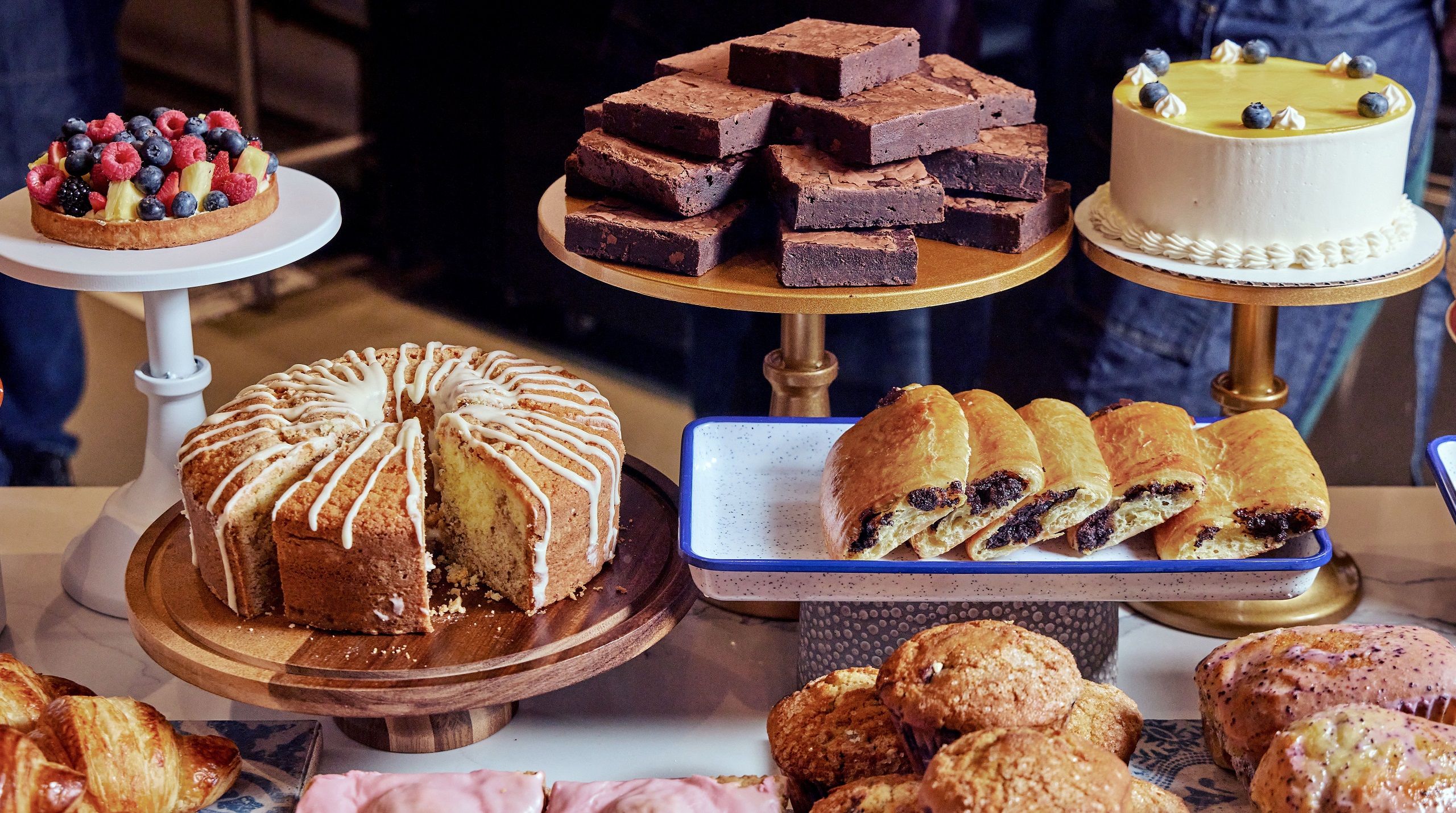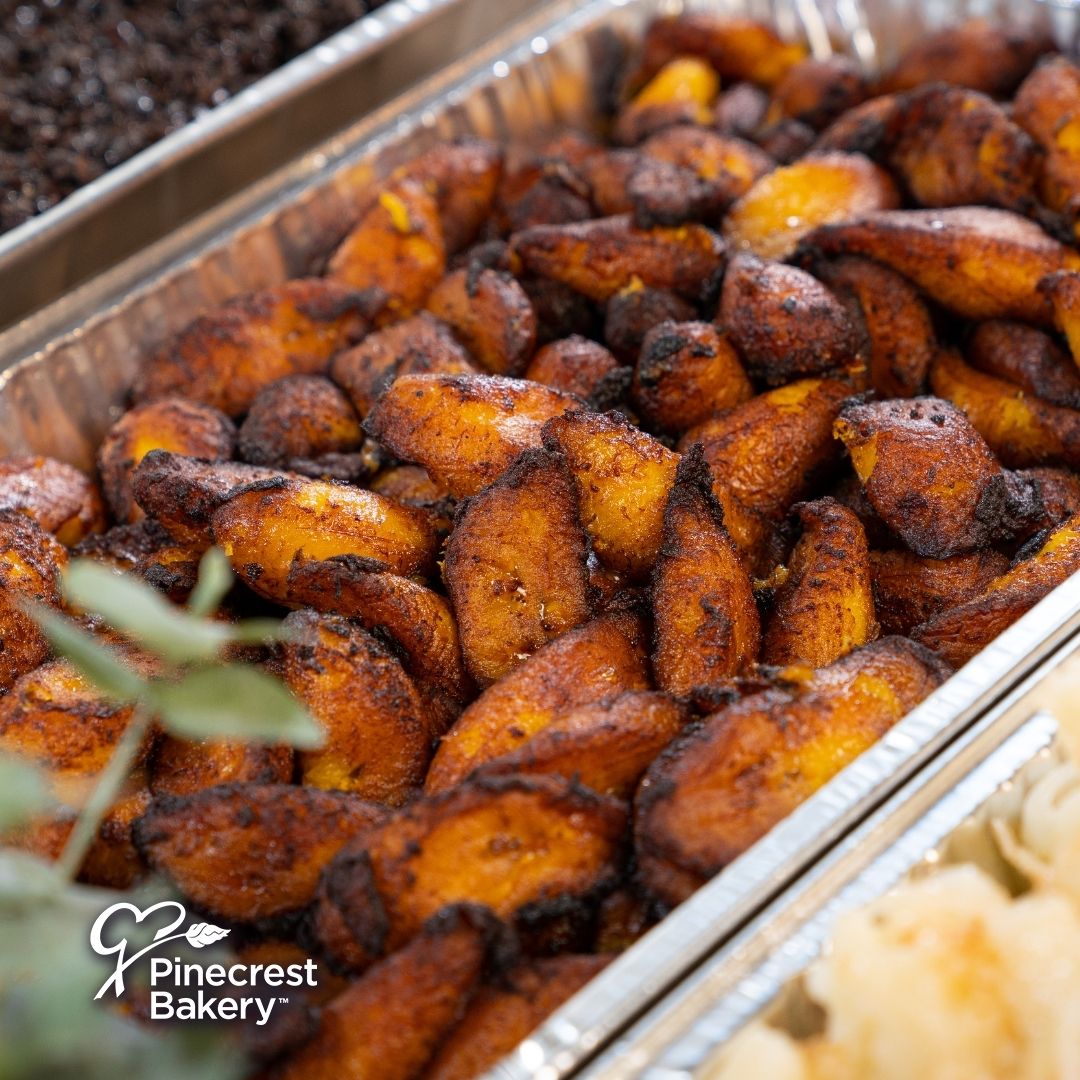Top-Rated Bakery Catering Maddington for Appetizing Treats
Top-Rated Bakery Catering Maddington for Appetizing Treats
Blog Article
Understanding the Art of Bakery Products: From Fresh Baked Breads to Tempting Pastries and Finger Foods
From the science behind the best loaf of bread, where fermentation and gluten development play pivotal roles, to the finesse required for creating layered pastries, each element reveals a compelling narrative of craftsmanship. The adaptability of finger foods shows just how taste and structure can be skillfully incorporated to engage varied preference preferences.
The Science of Bread Making
At the heart of every loaf of bread lies an interesting interplay of chemistry and biology. The procedure of bread making starts with the combination of flour, water, salt, and yeast-- each active ingredient playing a critical function in the final item.
Yeast, a living organism, ferments the sugars present in the flour, producing co2 and alcohol at the same time. The co2 gas develops bubbles in the dough, causing it to increase and establish a light structure. The temperature level and humidity throughout fermentation dramatically influence yeast activity and, as a result, the bread's flavor and structure.

Mastering Pastry Techniques
Exactly how can one accomplish the fragile equilibrium of appearance and flavor that defines extraordinary bread? Understanding bread strategies calls for a deep understanding of active ingredients, techniques, and the science behind them. Basic to this craft is the option of high-grade active ingredients-- flour, butter, sugar, and eggs-- each playing a vital duty in the end product's taste and structure.
The technique of lamination, which entails folding layers of dough and butter, produces the desired flakiness in pastries like croissants and puff pastry. Accuracy in temperature is essential, as butter needs to continue to be chilly to ensure optimal layers. Likewise, correct blending approaches, such as the creaming method for cakes, ensure also unification of air and fat, causing a light and ventilated crumb.
Furthermore, preserving the ideal moisture degrees throughout cooking can dramatically influence the result, making certain that breads climb correctly and achieve that golden-brown finish. The art of pastry also requires patience and practice; each attempt boosts one's ability and understanding of the complex equilibrium called for to develop tempting pastries that delight the detects. Proficiency in these techniques ultimately differentiates a competent pastry chef from an amateur.
Types of Finger Foods
The globe of culinary thrills extends past breads to include a vast range of finger foods, which are commemorated for their convenience and flexibility. These bite-sized deals with are excellent for celebrations, providing a selection of tastes and structures that provide to varied palates.

On the sweeter side, bite-sized cupcakes and mini tarts use a wonderful finish to any kind of dish, attracting those with a pleasant tooth. Furthermore, cheese and charcuterie boards act as an advanced selection, their website allowing guests to customize their bites with a variety of meats, nuts, fruits, and cheeses.
Flavor Profiles in Cooking
Cooking is a detailed dance of flavor accounts that incorporates pleasant, full-flavored, and umami notes to create a harmonious experience for the palate. Comprehending these profiles is necessary for bakers seeking to boost their developments.
Ingredients such as chocolate and caramel introduce complex pleasant notes that can either dominate or enhance various other tastes. Active ingredients like cheeses, natural herbs, and spices can transform a straightforward dough into a complex taste experience.
Umami, often ignored in cooking, plays a considerable function in enhancing flavors. Ingredients such as aged cheeses, fermented items, and even specific nuts add to a savory depth that enhances overall taste.
Furthermore, the interplay of acidity from components like buttermilk or citrus passion can lighten up tastes, supplying a refreshing counterpoint to sweet taste. By thoughtfully integrating these taste accounts, bakers can craft products that resonate with diverse tastes, creating a remarkable culinary experience. Eventually, understanding taste profiles is vital to technology in the globe of cooking.
Necessary Cooking Equipments and Ingredients
Recognizing flavor profiles in cooking collections the phase for choosing the right devices and components that promote the creation of outstanding baked products. A trusted set of baking pans-- such as sheet frying pans, loaf frying pans, and cake try these out frying pans-- is critical for accomplishing desired forms and structures.
Flour serves as the foundation of many recipes; selecting the best kind-- be it all-purpose, pastry, or bread flour-- can drastically impact the outcome. Cooking powder and cooking soft drink are vital for creating lift in cakes and breads.
In addition, including flavor enhancers like vanilla extract, seasonings, and citrus zest can raise your creations. By making sure access to these fundamental devices and components, bakers can confidently begin on their culinary journey, crafting a varied variety of wonderful baked products.
Final Thought
In verdict, the art of bakeshop products includes an extensive understanding of both creative strategies and clinical concepts. Proficiency in bread production, pastry preparation, and finger food presentation discloses the detailed partnerships between active ingredients and procedures. Moreover, discovering varied flavor profiles enriches the baking experience, while necessary devices and active ingredients offer the structure for success. Ultimately, the enchanting globe of baking thrives on the unified interplay of science and creative thinking, resulting in a myriad of delightful cooking productions.
How can one achieve the fragile equilibrium of texture and flavor that specifies remarkable bread? Basic to this craft is the choice of high-grade components-- flour, butter, sugar, and eggs-- each playing an important role in the final product's taste and appearance.

Understanding flavor accounts in cooking sets the phase for picking the right devices and ingredients that facilitate the development of exceptional baked items. Exploring diverse flavor accounts improves the baking experience, while necessary tools and components provide the structure for success.
Report this page